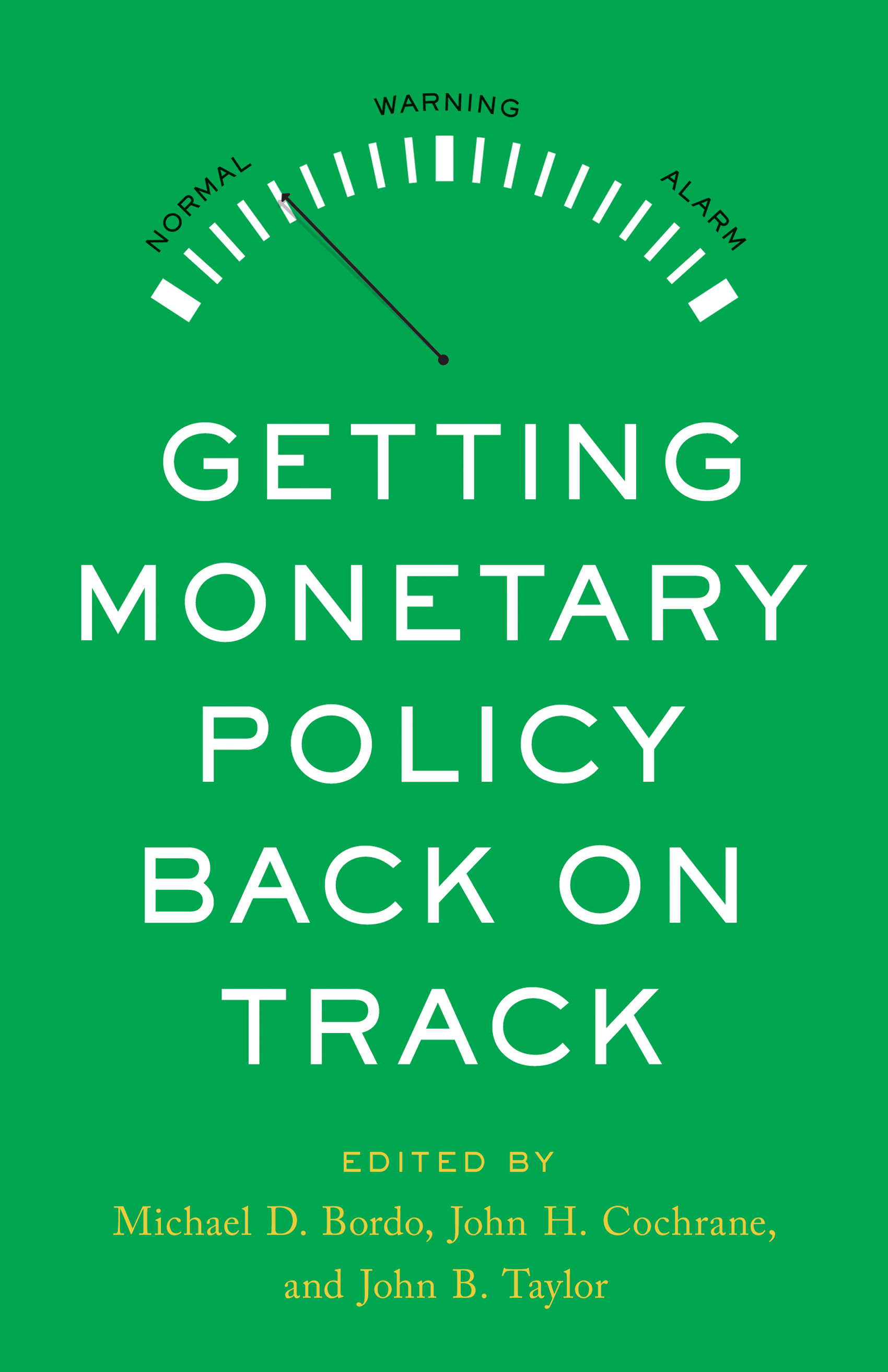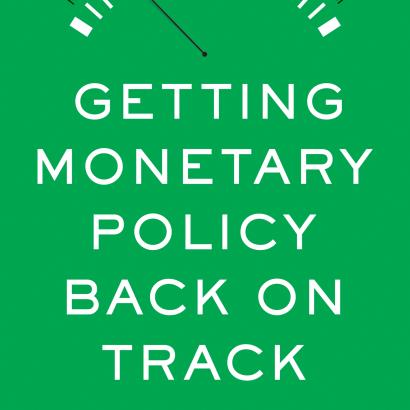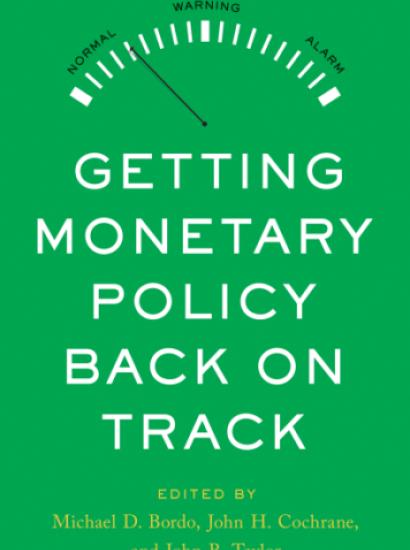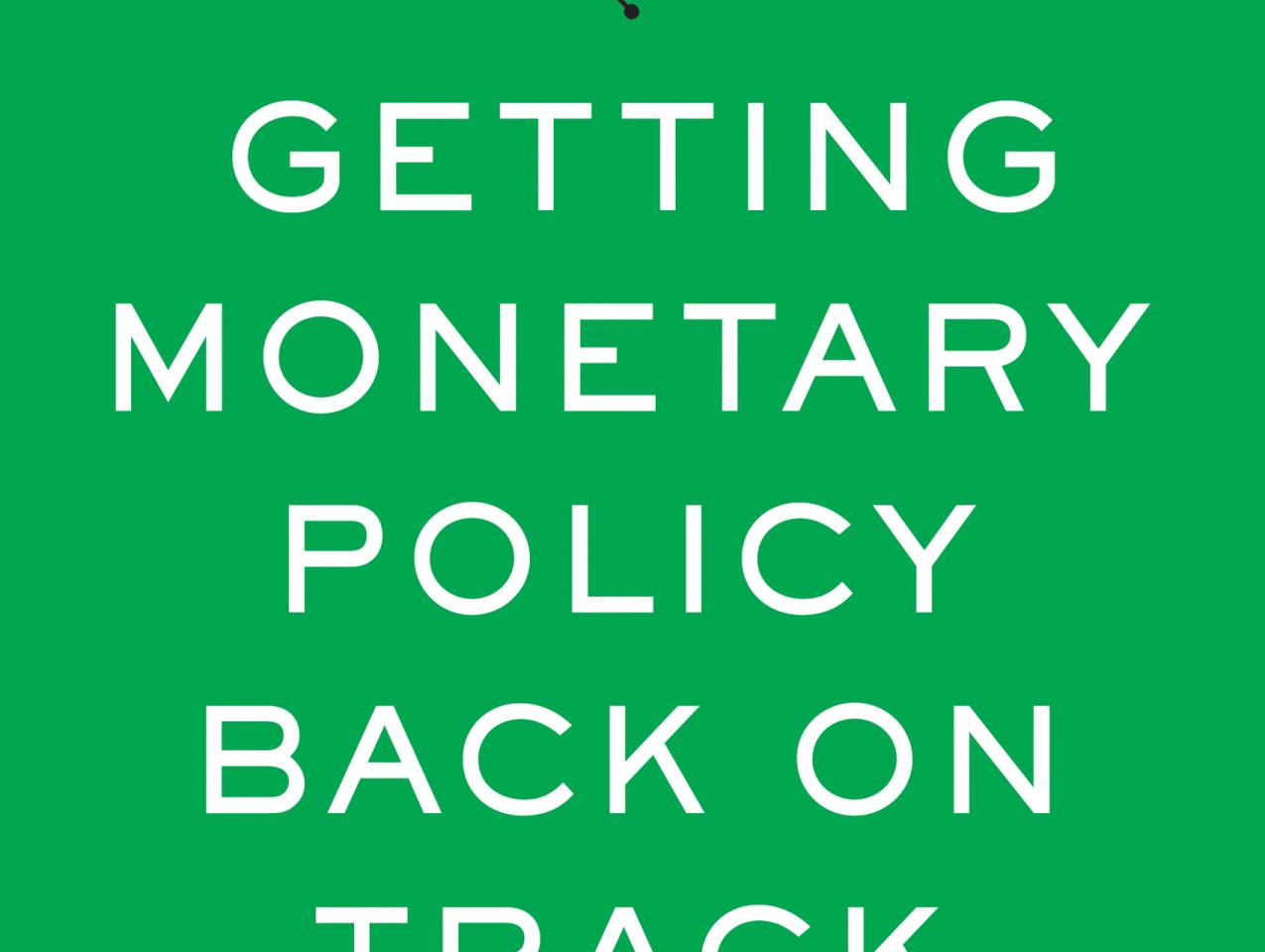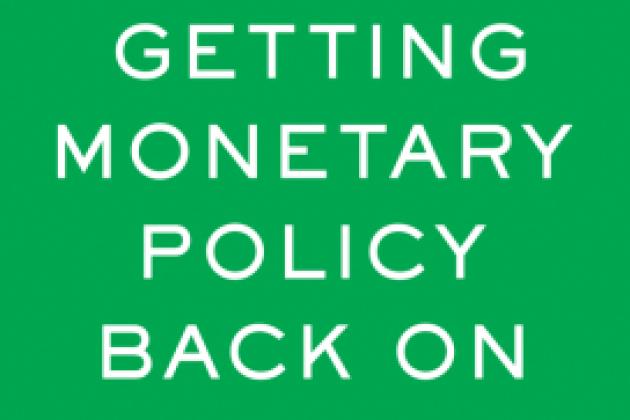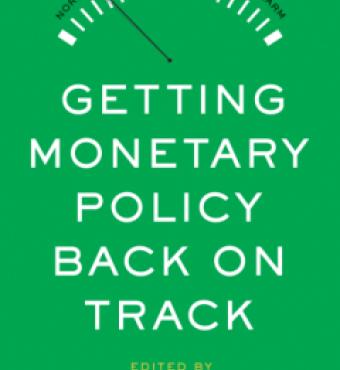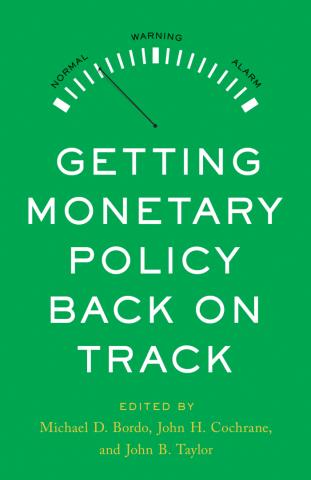In May 2023, the world’s top economic policymakers and academics convened at the Hoover Institution for the annual Monetary Policy Conference. They met at a tumultuous time: the previous year, inflation had surged, and some believed the Federal Reserve was slow to react. What was behind this surge, and why did the Fed fail to forecast inflation, or perceive it when it happened? Participants considered whether the sluggish response made the situation worse, and how to get inflation back under control.
This volume presents the full proceedings from this conference—the presentations, responses, and discussions. In it, participants debate the meaning of getting monetary policy “back on track,” the significance of recent bank failures, and how to improve forecasting and oversight. A persistent underlying question is whether the Fed should follow a rule-like monetary policy, which maintains predictability in response to fluctuating inflation, GDP, and employment rates. Presenters discuss this issue as they recognize the thirtieth anniversary of the Taylor rule, an important guide to practical monetary policy.
Other topics include a five-century history of central bank balance sheets, inflation targeting in Japan, and lessons from Latin America. Together, these proceedings illustrate and dissect the interaction of financial regulation and monetary policy.
About the Authors
Michael D. Bordo is the Ilene and Morton Harris Distinguished Visiting Fellow at the Hoover Institution and the Board of Governors Professor of Economics and director of the Center for Monetary and Financial History at Rutgers University.
John H. Cochrane is the Rose-Marie and Jack Anderson Senior Fellow at the Hoover Institution, a research associate of the National Bureau of Economic Research, and an adjunct scholar of the Cato Institute.
John B. Taylor is the George P. Shultz Senior Fellow in Economics at the Hoover Institution and the Mary and Robert Raymond Professor of Economics and director of the Introductory Economics Center at Stanford University.
Contributors and Discussants: Anat R. Admati, Michael D. Bordo, James Bullard, Anusha Chari, Richard H. Clarida, John H. Cochrane, Steven J. Davis, Darrell Duffie, Sebastian Edwards, Barry Eichengreen, Niall Ferguson, Peter Blair Henry, Philip N. Jefferson, Martin Kornejew, Haruhiko Kuroda, Jeffrey M. Lacker, Mickey D. Levy, John Lipsky, William R. Nelson, Charles I. Plosser, Randal Quarles, Joshua D. Rauh, Condoleezza Rice, Paul Schmelzing, Moritz Schularick, Amit Seru, John B. Taylor, Volker Wieland, James A. Wilcox
Preface
Michael D. Bordo, John H. Cochrane, and John B. Taylor
1. Introductory Remarks to the Conference
Condoleezza Rice
Thirty-Year Anniversary of the Taylor Rule
2. The Taylor Rule at Thirty
Richard H. Clarida
3. Naming the Taylor Rule
John Lipsky
4. The Taylor Rule at Thirty: Still Useful to Get the Fed Back on Track
Volker Wieland
Introductory Remarks: John H. Cochrane
General Discussion: Harald Uhlig, David H. Papell, Richard H. Clarida, Volker Wieland, Sebastian Edwards, Andrew T. Levin, Christopher Erceg, Brian Sack, Michael J. Boskin, John Lipsky
Financial Regulation: Silicon Valley Bank and Beyond
5. Silicon Valley Bank and Beyond: Regulating for Liquidity
Darrell Duffie
6. Silicon Valley Bank: What Happened? What Should We Do about It?
Randal Quarles
7. What We Can Learn about Financial Regulation from Silicon Valley Bank’s Collapse and Beyond
Amit Seru
Introductory Remarks: Anat R. Admati
General Discussion: Randal Quarles, Darrell Duffie, Michael J. Boskin, Michael D. Bordo, William R. Nelson, Amit Seru, James Bullard, Harald Uhlig
Disinflation and the Stock Market
8. Disinflation and the Stock Market: Third-World Lessons for First-World Monetary Policy
Anusha Chari and Peter Blair Henry
Discussant Remarks: Joshua D. Rauh
Introductory Remarks: William R. Nelson
General Discussion: Peter Blair Henry, John H. Cochrane, Andrew Filardo, Sebastian Edwards, James Bullard, Michael D. Bordo, Andrew T. Levin, Peter Q. Blair, John A. Gunn
Inflation Targeting in Japan, 2013–2023
9. Inflation Targeting in Japan, 2013–2023
Haruhiko Kuroda
Introductory Remarks: John B. Taylor
General Discussion: Sebastian Edwards, Haruhiko Kuroda, Beat Siegenthaler
10. Five Centuries of Central Bank Balance Sheets: A Primer
Niall Ferguson, Paul Schmelzing, Martin Kornejew, and Moritz Schularick
Discussant Remarks: Barry Eichengreen
Introductory Remarks: Michael D. Bordo
General Discussion: Niall Ferguson, Paul Schmelzing, Jeffrey M. Lacker, Andrew T. Levin, Christopher Erceg, Krishna Guha
Forecasting Inflation and Output
11. The Fed: Bad Forecasts and Misguided Monetary Policy
Mickey D. Levy
Discussant Remarks: Steven J. Davis
Introductory Remarks: James A. Wilcox
General Discussion: Richard H. Clarida, James Bullard, Andrew T. Levin, John H. Cochrane, Jeffrey M. Lacker, Volker Wieland, Terry L. Anderson, Mickey D. Levy, Steven J. Davis
Toward a Monetary Policy Strategy
12. The Monetary-Fiscal Policy Mix and Central Bank Strategy
James Bullard
13. On the Assessment of Current Monetary Policy
Philip N. Jefferson
14. The Fed Should Improve Communications by Talking about Systematic Policy Rules
Jeffrey M. Lacker and Charles I. Plosser
Introductory Remarks: John B. Taylor 371
General Discussion: Mickey D. Levy, James Bullard, Charles Siguler, Jeffrey M. Lacker, William R. Nelson, Andrew T. Levin, Krishna Guha, Philip N. Jefferson
15. Latin American Inflation and Chile’s Market-Oriented Reforms
Sebastian Edwards
Introductory Remarks: John B. Taylor
General Discussion: Steven J. Davis, Sebastian Edwards







